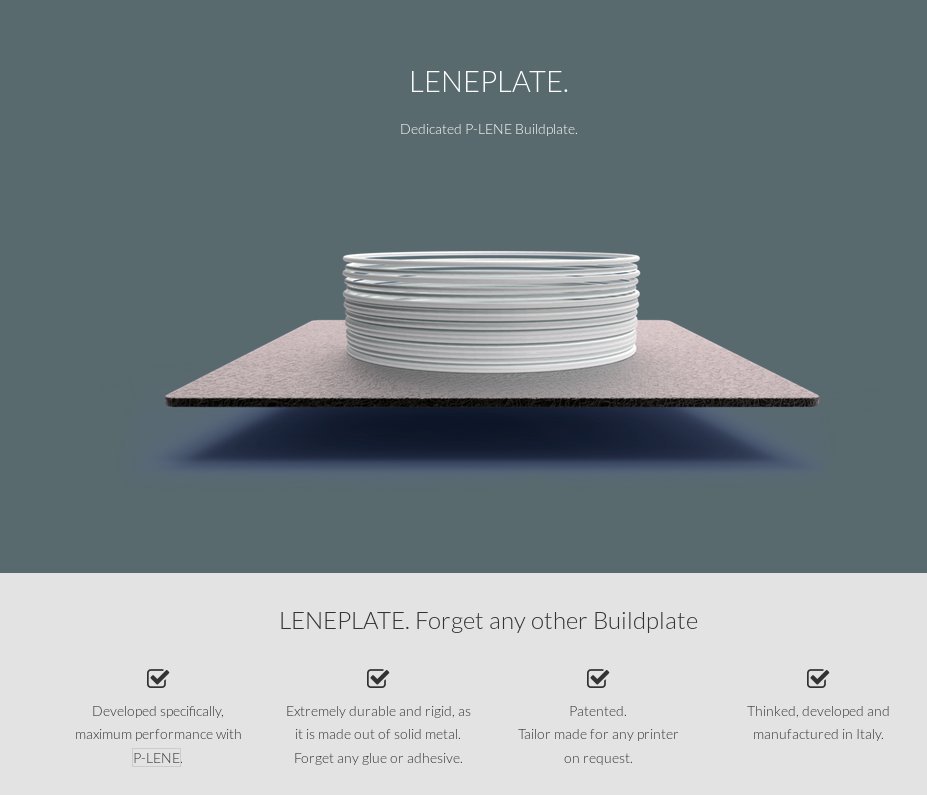
A reader pointed out an unusual patent claimed by one of companies on which we recently wrote a story.
The story, “Vendors Meeting the Need for New Plastic Filaments”, described how the recent interest in 3D printing unusual materials that led to 3D printer manufacturers producing multi-material machines must be matched by filament vendors to provide them. Both must be true for the demand to be met.
In the story, we described one vendor, TreeD, who have developed a polypropylene 3D printer filament, and as all good filament vendors should, they also provided a means for ensuring it sticks to the print surface. They did so by providing a matching product, the LENEPLATE, a specialized surface that presumably adheres nicely to the polypropylene.
But sharp-eyed reader Marco Fioretti read the fine print in the LENEPLATE description and found it saying:
Developed specifically. Maximum performance with P-LENE (TreeD’s polypropylene filament)
Extremely durable and rigid as it is made out of solid metal. Forget any glue or adhesive.
Patented. Tailor made for any printer on request.
Bolding is mine. But Foretti asks the provocative question: “Are you saying you patented a rectangle of metal?”
Amusing for sure! Everyone uses metal rectangles. They’re commonplace. How could they possibly be patented?
There’s a couple of things here that are not entirely visible.
First, we don’t know the composition of this metal. It might be a specific chemical combination that provides the right level of adherence with their polypropylene. That could certainly be a unique discovery worthy of patenting.
Secondly, there is the idea of a patent itself. Most patents we see are actually “Utility Patents”, described here by the USPTO:
Utility Patent – Issued for the invention of a new and useful process, machine, manufacture, or composition of matter, or a new and useful improvement thereof, it generally permits its owner to exclude others from making, using, or selling the invention for a period of up to twenty years from the date of patent application filing ++, subject to the payment of maintenance fees. Approximately 90% of the patent documents issued by the USPTO in recent years have been utility patents, also referred to as “patents for invention”.
So what is in question here is not necessarily the specific form of a machine but rather the PROCESS it exhibits. In the case of the LENEPLATE, the process could be something like this: “3D printing polypropylene plastic onto a metal plate made from [specific chemical components] for producing prototyped 3D objects”. It’s not JUST a metal plate.
So yes, there would be a metal plate involved, but it is PART OF A PROCESS. The process is what is being patented at the highest level.
So can TreeD patent a plain metal plate? Apparently so!

